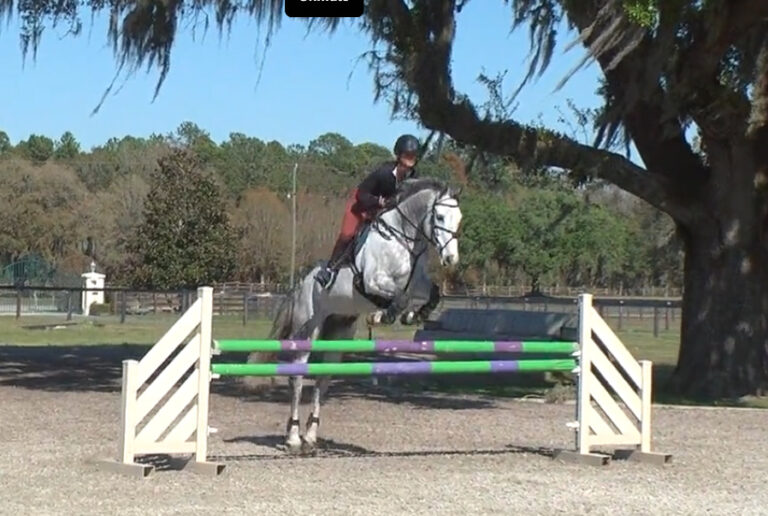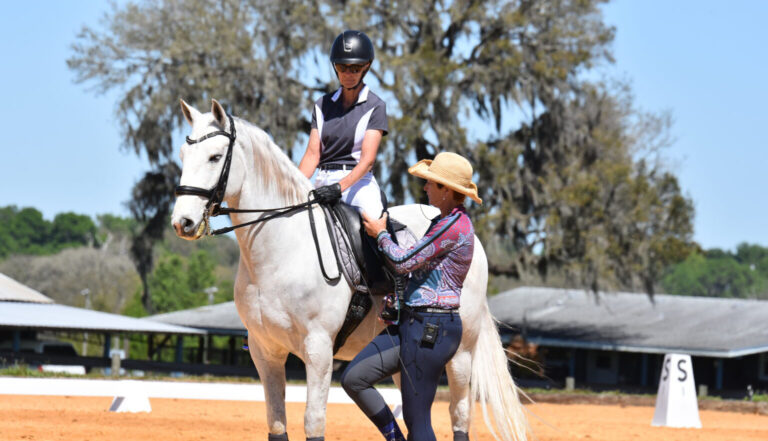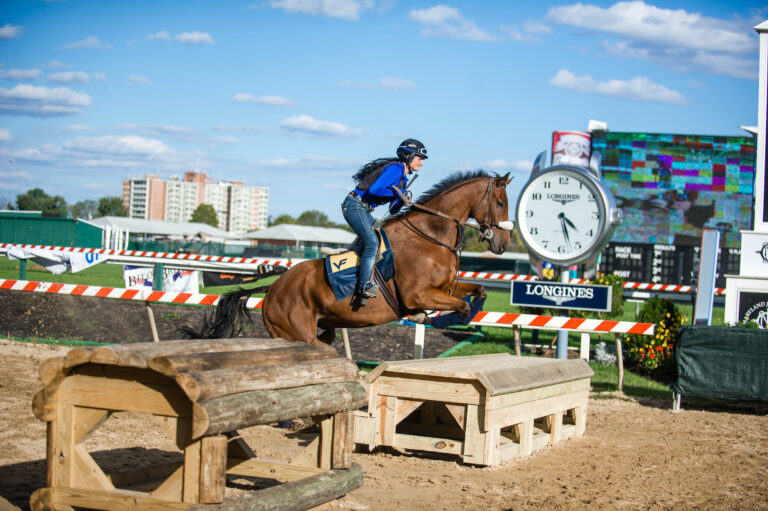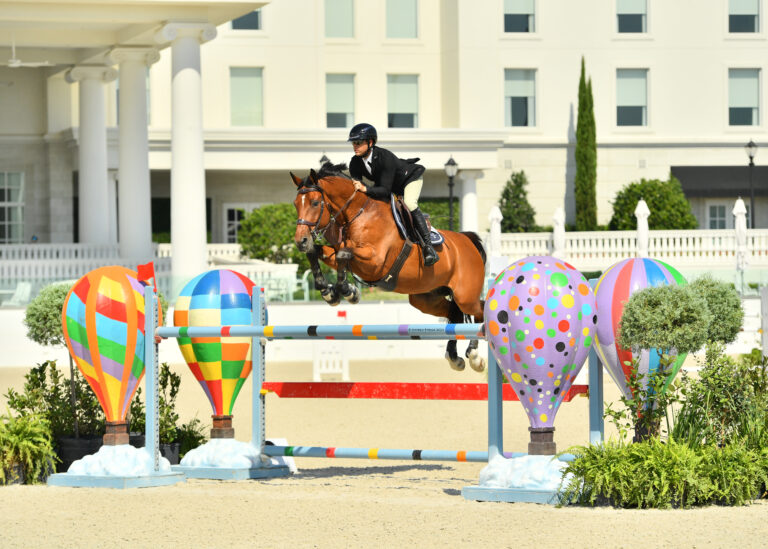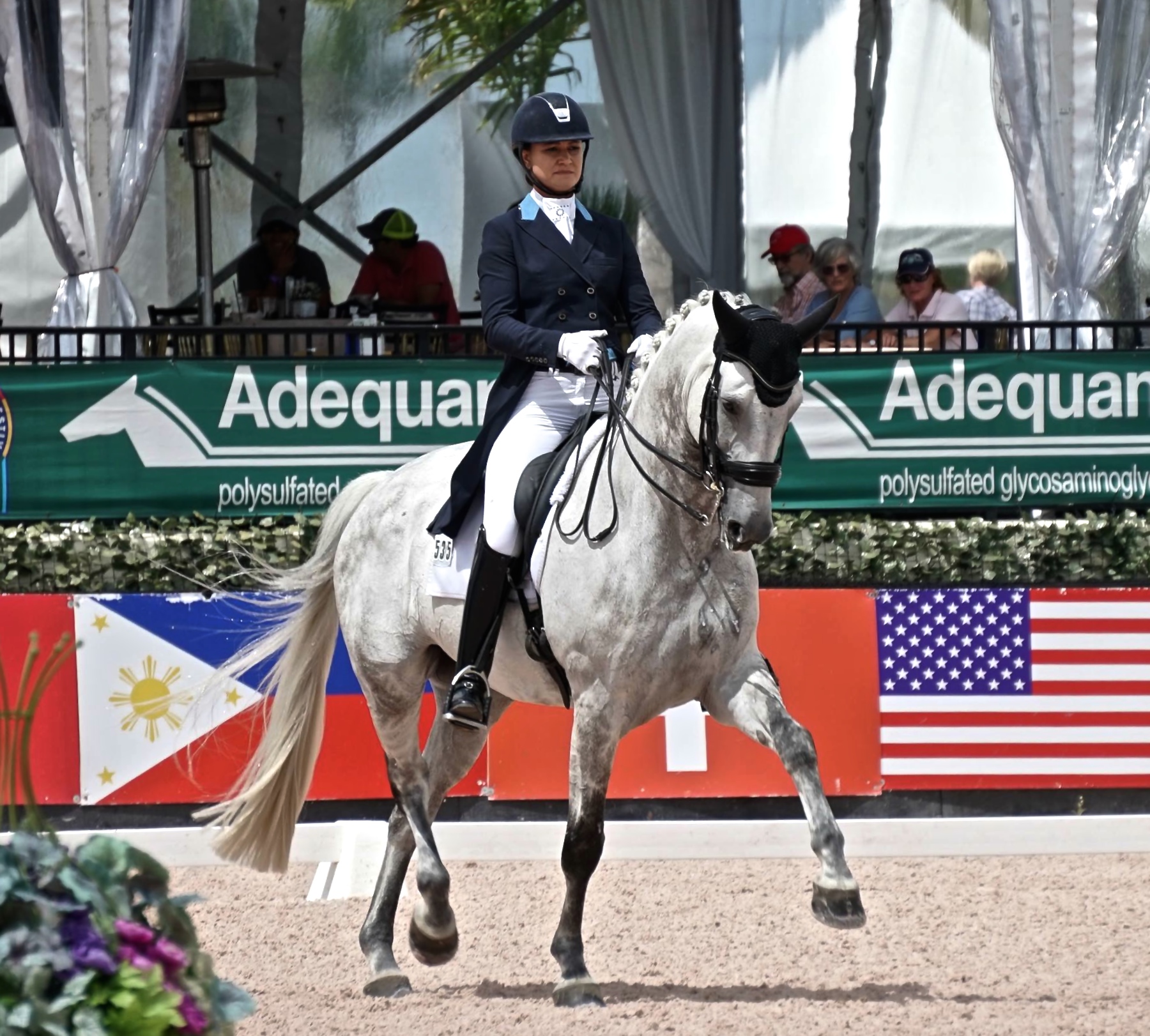
Courtesy, Adrienne Lyle
What are the most important things you can do to keep your relationship with your trainer going strong? Perhaps you have an annual goals meeting. Or you make sure to let her know what you appreciated most at the end of a lesson. There are so many facets to a healthy, long-term coach–athlete bond. It can certainly be tricky to keep your eye on them all. From time to time it is useful to take a step back and examine your role in the partnership you have with your trainer and what you can do to keep it functioning optimally.
I thought it would be useful to highlight some tips from someone with a long and prosperous relationship with her trainer and mentor—Olympian and World Equestrian Games dressage competitor Adrienne Lyle. After starting as a working student and hauling in for lessons while in college, Adrienne has trained with Debbie McDonald for more than 13 years. They are an inspiring example of a trainer–student relationship that has grown and blossomed throughout the years. Adrienne offers valuable ideas that can help you strengthen the connection you have with your trainer.
Believe in the System
“The first thing is to be willing to be truly open to learning your trainer’s system and not bring any ego with you,” Adrienne explains. “If you are going to be in someone’s system you have to really believe in that system and commit to it 100 percent. I think a lot of people make a mistake of ‘trainer-hopping.’ Not that you can’t get outside ideas or go to clinics, but especially when you are first in a system, you have to stick with it until it is really confirmed and understood … . Consistency is key. I immersed myself in Debbie’s program when I started with her. I listened and soaked up all the information I could. Now after all these years, we have created more of a relationship where we talk back and forth and brainstorm. But I think if you come in with too much of that initially you lose the ability to absorb some of what they are saying.”
Be open and trust your trainer and her system. This may sound straightforward due to the fact that when you hired your trainer you (hopefully) did some due diligence to make this decision. Therefore, you know a lot of significant, positive things about her style, abilities and philosophy. But how do you specifically build trust within your working relationship?
Action Steps:
1. Listen carefully and commit to executing your trainer’s instruction while in a lesson. Right after you are asked to extend the trot is not the time to say, “I get so frustrated working on our extensions at the beginning of the week.” Put your full effort into enacting your instructor’s training concepts while on your horse. Try to save comments or questions for the end of the ride or away from the ring.
2. Make a distinction between “how” and “why” questions. Asking your trainer questions can be tricky because in an effort to understand something in a deeper way, you can accidentally sound like you doubt her. When you need to ask a “how” question to help you understand or clarify what you are supposed to do, make sure you let her know that you are on board and simply need more information. For example, “I understand that he needs to be straighter; I just need more help on what sequence of aids you want me to use as we come out of the corner.”
3. Make sure you continue to learn your trainer’s system by watching her teach lessons to other riders at various levels, observing her school your horse or others and looking for appropriate opportunities to have conversations about her techniques, philosophy and methods of working with horses.
Respect the Process: Do Your Homework
“When I first had lessons with Debbie, I hauled in and could only afford a couple of lessons I had saved up for that summer,” Adrienne says. “So I took one lesson and I was going to take another a week later … . I remember how much she was impressed that I had focused and improved on what we had worked on in that first lesson. It is really important. Don’t just ride and count on your trainer to tell you what to do constantly. She may say something once or twice or a few times, but then it is your job to say, ‘OK, now how do I really focus on this and build a habit for me to do it the correct way?’”
Doing your homework demonstrates that you are a serious student, you respect the process and you are willing to put in the detailed work to improve your connection to your horse—all of which will strengthen the bond you share with your trainer. How you go about doing your homework between lessons can take many forms, but first you have to clearly identify what goals and themes you are working on together. Are you addressing a large goal, such as getting your horse to respect your leg and to go forward easily and willingly when you ask? Or improving on a small physical goal, such as keeping your fingers closed on the reins?
Action Steps:
1. When you ride on your own, make sure to prime your focus with your goals before your rides to stay focused and put in quality work on the things that your trainer has highlighted. After looking over one or two goals that you established with ideas from your recent lessons, create some specific exercises to work on them. For example, riding three figure eights while focused on maintaining a consistent rhythm at the trot (to work on keeping your horse in front of your leg) could put into action something you have been hearing often from your trainer.
2. Process what you are learning in your lessons through notes, voice memos or talking it over with a friend so that you can be responsible for training themes you are working on. Tracking your goal effort and progress between rides is a valuable way to hold yourself accountable while measuring your achievements.
Role Clarity: Maintain a Healthy Coach—Athlete Relationship
“When you get in the saddle, it’s a professional setting. It’s no different than an NFL player and a football coach,” explains Adrienne. “At that point she’s not your friend, she’s your trainer … . You know you aren’t going to get your feelings hurt if she says something strongly. You know her job is to push you and make you better in that moment regardless of anything that is going on outside of it. I’ve always been very good at separating that [relationship] out.”
There are so many things that can create a bond and friendship between you and your trainer in addition to your common love of horses. They include training breakthroughs, goals accomplished, long days, humorous moments, travel, social events, meals shared and an abundance of time spent together. These will all add depth and breadth to your relationship. However, for you to be successful together with regard to your riding and training, it is important to create and maintain a true respect for the learning process within the friendship.
Action Steps:
1. Create structure to support healthy boundaries. For example, you may set a rule for yourself that when you enter the arena you are in your professional role with your instructor. The middle of your ride or lesson will not be the time to talk about how your neighbor’s dog kept you awake last night or how your car is making that weird noise again and you are worried about paying for a new transmission, for example. Not only can those types of topics wreak havoc on your own focus, they can compromise your trainer’s time, effort and perhaps motivation.
2. Take instruction, stay hungry and welcome constructive criticism. Periodically acknowledge the fact that if you had a trainer who was simply your friend and told you all of the time how fabulous you were, it might be hard to learn new things. How would you progress? Remind yourself that it is a blessing to have a trainer who will show her dedication to you as a rider by asking you to improve and will continue to help you raise the bar throughout the span of your relationship.
3. Riding is a sport that we throw our whole heart into. The people who teach and support us are central to this passionate journey. Creating a positive, healthy, long-term relationship with your trainer enables you to enjoy a deep sense of trust and steadfast communication, which are essential for your development as an athlete.
Think through the many aspects of the connection you share with your trainer, use these tips to get you started, put some maintenance and attention into it and you will be well on your way to enjoying a long and successful relationship.
This article was originally published in the November 2018 issue of Practical Horseman.





